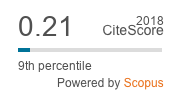APPLIED BEHAVIOR ANALYSIS IN ORGANIZATIONAL SETTINGS
The Behavior Engineering Model
Abstract
The Behavior Engineering Model, suggested by
Gilbert is used to diagnose what causes performance deficiencies
by analysing behavioral repertory and its environmental support.
Behavior is looked at in three ways: a person responds (R) to an
information telling what to do (SD) and the action becomes reinforced
(Sr). The necessary information to a good performance is
related to the knowledge and the developed abilities in the repertory
of behavior. Other components of behavior to be analysed are
instrumentation, response capacity and motivation, which is view
in two aspects: the available incentives and the employee's capability
to be reinforced.
Downloads
References
needs. Management of Personnel Quarterly, 6, 20-33.
Gilbert T.F. (1978). Human competence: Engineering worthy performance. New
York: McGraw-Hill.
McCormick, E.J. (1970). Human factors engineering. New York: McGraw-Hill.
Meister, D. (1971). Human factors: Theory and practice. New York: John Wiley.
Nadler, D.A., Mirvis, P. &Cammann, С (1976). The ongoing feedback system:
Experimenting with a new managerial tool. Organizational Dynamics, 4,
63-80.
Parsons, H.M. (1974). What happened at Hawthorne? Science, 183, 922-932.
Warren, M.W. (1979). Training for results. Reading, MA: Addison-Wesley.



